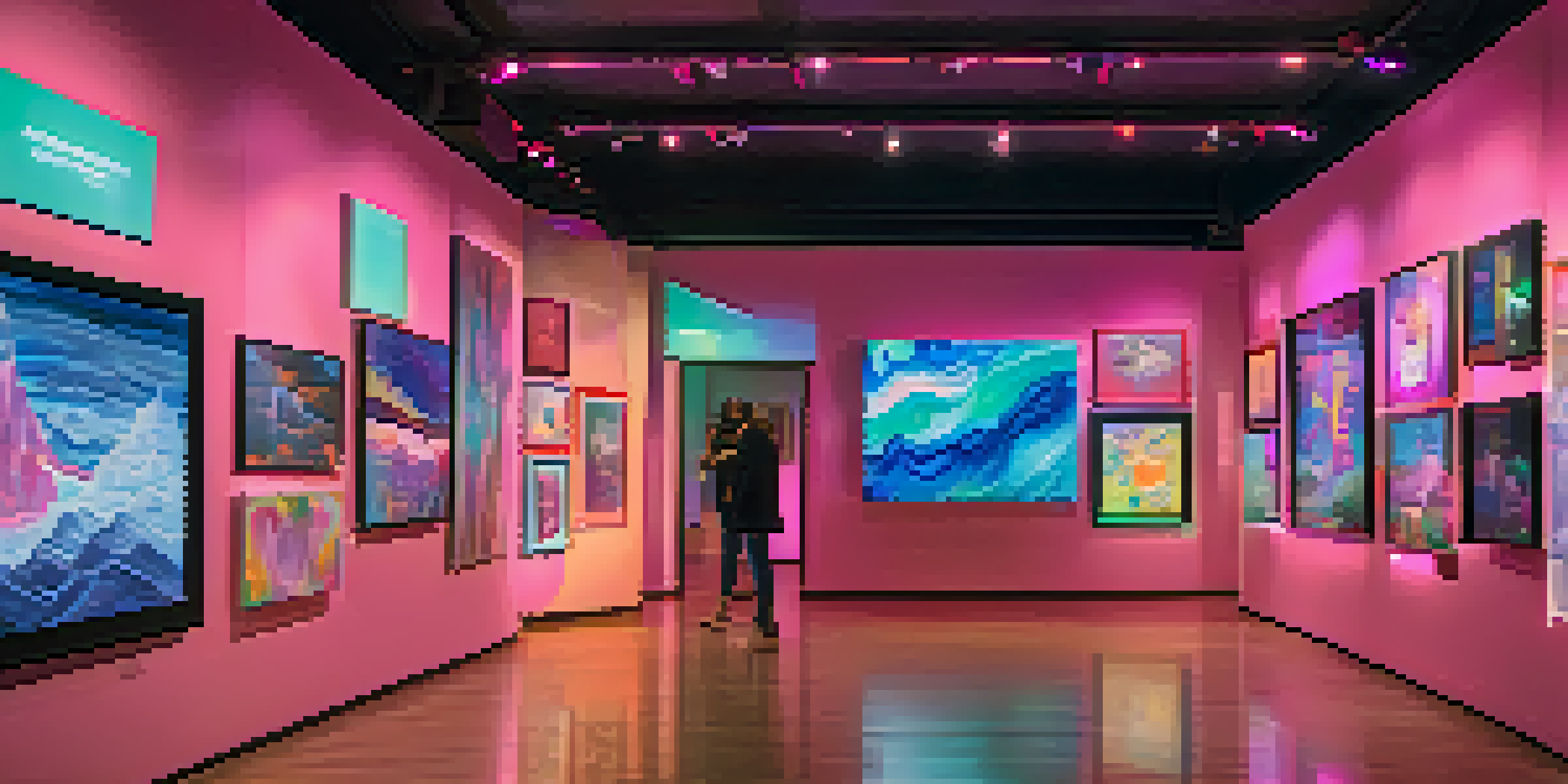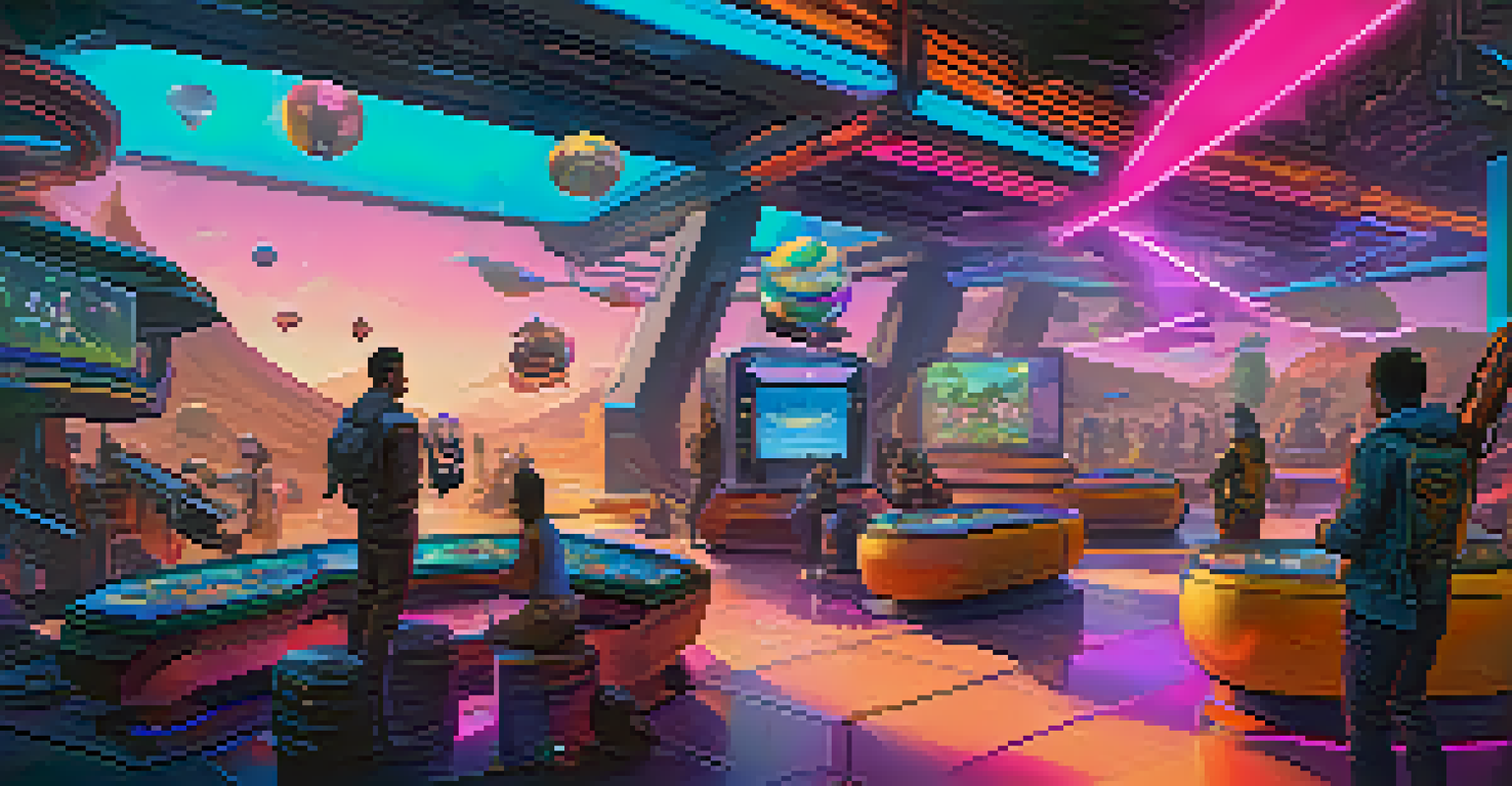EIP-721: Understanding the ERC-721 Non-Fungible Token Standard

What is EIP-721 and ERC-721 Non-Fungible Tokens?
EIP-721 is an Ethereum Improvement Proposal that outlines the ERC-721 standard, which defines how non-fungible tokens (NFTs) operate on the Ethereum blockchain. Unlike cryptocurrencies like Bitcoin or Ethereum itself, which are fungible and can be exchanged for one another, NFTs are unique digital assets that cannot be replaced or exchanged on a one-to-one basis. This uniqueness makes NFTs ideal for representing ownership of digital art, collectibles, and even virtual real estate.
NFTs are revolutionizing the way we think about ownership and value in the digital world.
Think of NFTs like rare trading cards. Each card has distinct characteristics that make it valuable, and you can't simply trade one for another without considering these traits. Similarly, ERC-721 tokens have unique identifiers that ensure no two tokens are alike, enhancing their value and appeal in the digital marketplace. This opens up a world of possibilities for creators and collectors alike.
As we dive deeper into EIP-721, we’ll uncover how this standard has revolutionized the concept of ownership in the digital realm and what it means for artists, gamers, and investors.
The Core Features of ERC-721 Tokens
ERC-721 tokens are built with a few key features that distinguish them from other token standards, such as ERC-20. One of the primary features is the ability to create unique identifiers for each token, allowing for distinct ownership records. This means that if you own an ERC-721 token, you have verifiable proof of ownership that is recorded on the blockchain, making it secure and tamper-proof.

Another important feature is the support for metadata, which can include information about the asset, such as a digital artwork's title, description, and even the artist's name. This additional layer of information enriches the token and allows buyers to understand what they are purchasing. Just as a painting comes with a certificate of authenticity, NFTs carry metadata that verifies their uniqueness and provenance.
NFTs Redefine Digital Ownership
EIP-721 and the ERC-721 standard allow for unique digital assets, enabling verifiable ownership and authenticity in the digital realm.
Lastly, ERC-721 tokens enable the transfer of ownership through smart contracts, automated agreements executed on the blockchain. This means that buying, selling, or trading NFTs can be done seamlessly, without the need for intermediaries, making the process efficient and cost-effective.
How ERC-721 Changed the Digital Art Landscape
The introduction of ERC-721 tokens has transformed the digital art world by providing artists with a new way to monetize their creations. Before the advent of NFTs, artists struggled to prove ownership and authenticity of their digital works, often leading to unauthorized reproductions. With NFTs, artists can now create limited edition pieces, ensuring that buyers know they are purchasing something unique and valuable.
The interesting thing about NFTs is that they allow artists to create a direct relationship with their audience.
Consider the case of Beeple, a digital artist who sold a piece of art for $69 million at a Christie's auction. This landmark sale showcased the potential of NFTs and the ERC-721 standard, highlighting how artists can now reach a global audience and achieve unprecedented financial success. The ability to tokenize their work has empowered artists to take control of their intellectual property and profits.
Moreover, the rise of platforms like OpenSea and Rarible has made it easier for creators to mint and sell their NFTs, democratizing access to the art market. Artists no longer need to rely on traditional galleries or auction houses to showcase their work, as they can directly connect with collectors in a vibrant digital ecosystem.
Use Cases Beyond Art: Gaming and Virtual Real Estate
While digital art is often the most discussed use case for ERC-721 tokens, their applications extend far beyond that. In the gaming industry, NFTs are being used to represent in-game assets, such as characters, skins, and weapons. This allows players to truly own their items, trade them with others, or even sell them on secondary markets, adding real-world value to their gaming experience.
For example, in games like Axie Infinity, players can breed, buy, and sell virtual creatures as NFTs. Each creature is unique, and players invest time and resources to develop them, making the ownership of these assets incredibly valuable. This not only enhances gameplay but also introduces new economic opportunities for gamers worldwide.
ERC-721 Powers Diverse Applications
Beyond art, ERC-721 tokens are revolutionizing industries like gaming and virtual real estate by providing true ownership of in-game assets and virtual land.
Additionally, NFTs are making waves in virtual real estate markets, where users can buy, sell, and develop virtual land within metaverse platforms like Decentraland. Each plot of land is an ERC-721 token, giving owners the ability to build, rent, or sell their virtual properties. This blend of gaming and real estate is creating a new digital economy that continues to grow and evolve.
Challenges and Criticisms of ERC-721 Tokens
Despite the excitement surrounding ERC-721 tokens, there are several challenges and criticisms that need to be addressed. One major concern is the environmental impact of blockchain technology, particularly with Ethereum's proof-of-work consensus mechanism. Critics argue that the energy consumption associated with minting and trading NFTs contributes to climate change, prompting calls for more sustainable practices.
Additionally, the NFT market has seen significant volatility, with prices for digital assets often fluctuating wildly. This can create a speculative environment where investors may purchase NFTs based on hype rather than intrinsic value. As a potential buyer, it's crucial to conduct thorough research and understand the asset you're investing in to avoid losses.
Finally, issues surrounding copyright and ownership rights have surfaced, as some individuals have minted NFTs of artworks without the original creator's consent. This raises ethical questions about intellectual property and the responsibilities of both creators and platforms in ensuring that artists are fairly compensated for their work.
The Future of ERC-721 and NFTs
Looking ahead, the future of ERC-721 tokens and NFTs appears bright, with ongoing developments aimed at addressing current challenges. As Ethereum transitions to a proof-of-stake consensus mechanism, the environmental impact of NFTs may be significantly reduced, making them more appealing to environmentally conscious collectors and artists.
Moreover, the continued growth of the metaverse and virtual realities suggests that NFTs will play a crucial role in shaping digital economies. As more users engage with these platforms, the demand for unique digital assets will likely increase, driving innovation within the NFT space and potentially leading to new standards beyond ERC-721.
Challenges Surrounding NFTs
Despite their potential, NFTs face challenges such as environmental concerns, market volatility, and ethical issues regarding copyright and ownership rights.
As the NFT market matures, we can also expect to see enhanced regulations and frameworks that protect both buyers and creators. This will help to foster a more sustainable and ethical ecosystem for NFTs, ensuring that the technology can continue to thrive and evolve in the years to come.
Conclusion: Embracing the NFT Revolution
In conclusion, EIP-721 and the ERC-721 standard have revolutionized the way we perceive ownership in the digital realm. By providing a framework for unique digital assets, NFTs have opened up new avenues for artists, gamers, and collectors, fostering creativity and innovation. The ability to tokenize assets has not only empowered creators but has also reshaped industries and introduced novel economic models.
However, as with any new technology, navigating the NFT landscape comes with its challenges. It's essential for participants to remain informed and vigilant, ensuring that they understand the implications of their investments and the ethical considerations surrounding digital ownership.

As we embrace this NFT revolution, one thing is certain: the world of digital assets is expanding, and the possibilities are limitless. By understanding and engaging with the ERC-721 standard, we can all participate in this exciting new frontier of creativity and commerce.